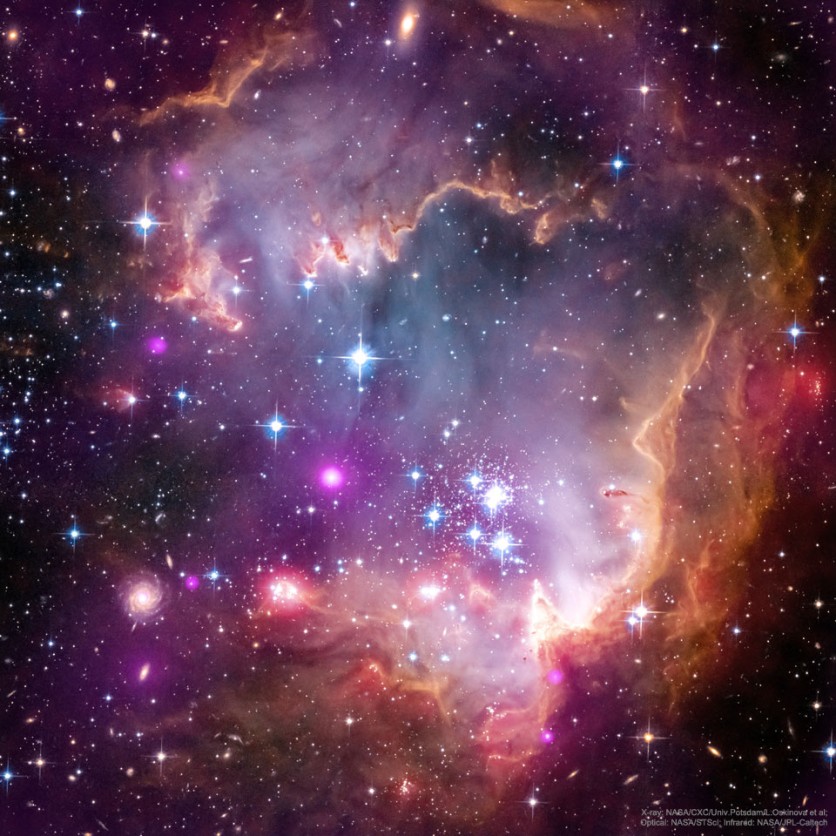The Oyster Star Cluster, also known as NGC 602, shines brilliantly in a new image shared by NASA, showcasing its mesmerizing beauty in various wavelengths of light.
NASA on the Oyster Star Cluster
This cluster is located near the outskirts of the Small Magellanic Cloud, a satellite galaxy approximately 200,000 light-years away. It provides a fascinating glimpse into star formation. The cluster is surrounded by a shell of gas and dust, remnants from its birth around five million years ago.
The stunning image the Hubble Space Telescope captured highlights NGC 602 with incredible detail. The Hubble image is further enhanced with X-ray data from the Chandra Observatory and infrared data from the Spitzer Space Telescope.
These combined observations reveal fantastic ridges and gas formations that appear to be sculpted by the energetic radiation and shock waves from the massive young stars within the cluster.
This energetic activity has eroded the dusty material and triggered a chain reaction of star formation moving away from the cluster's center.
The image includes an intriguing assortment of background galaxies hundreds of millions of light-years beyond NGC 602. Although far in the background, these galaxies add depth to the cluster's already spectacular view.
Read Also : NASA's Hubble Space Telescope Captures Incredible Image of Baby Stars Transforming a Nebula

Laboratory for Star Formation
According to NASA, NGC 602 offers astronomers a unique opportunity to study star formation in an environment different from our own Milky Way galaxy.
The Small Magellanic Cloud is a dwarf galaxy with fewer stars and lacks the enriched gas in larger galaxies. That makes it an excellent laboratory for understanding how star formation might have occurred in the early universe before the first generations of stars enriched the cosmic environment with heavier elements.
Star formation in NGC 602 began when a large part of the gas cloud collapsed under the force of gravity, becoming extremely dense. The intense radiation from the hot, young stars in the cluster is now sculpting the inner rim of the surrounding gaseous nebula.
According to NASA, certain parts of the nebula resist this erosion better than others, resulting in tall pillars pointing toward the stars, the source of the radiation.
Given the relative proximity of the Small Magellanic Cloud to Earth, astronomers have a prime chance to examine star formation within a different galaxy. This closeness permits detailed observation, revealing intricate details of the processes involved.
The distinct environment of this dwarf galaxy provides insight into what star formation may have looked like in the early universe. Hubble observations indicate that the central massive stars of NGC 602 and smaller stars emerged around four million years ago.
Additional research using NASA's Spitzer Space Telescope identified even younger stars at the cluster's edges, some still shrouded in gas and dust. This data implies that star formation initiated at the cluster's core and subsequently expanded outward.
Related Article : NASA Unveils New 3D Visualization of the Majestic Pillars of Creation Captured by Hubble and Webb

ⓒ 2025 TECHTIMES.com All rights reserved. Do not reproduce without permission.




